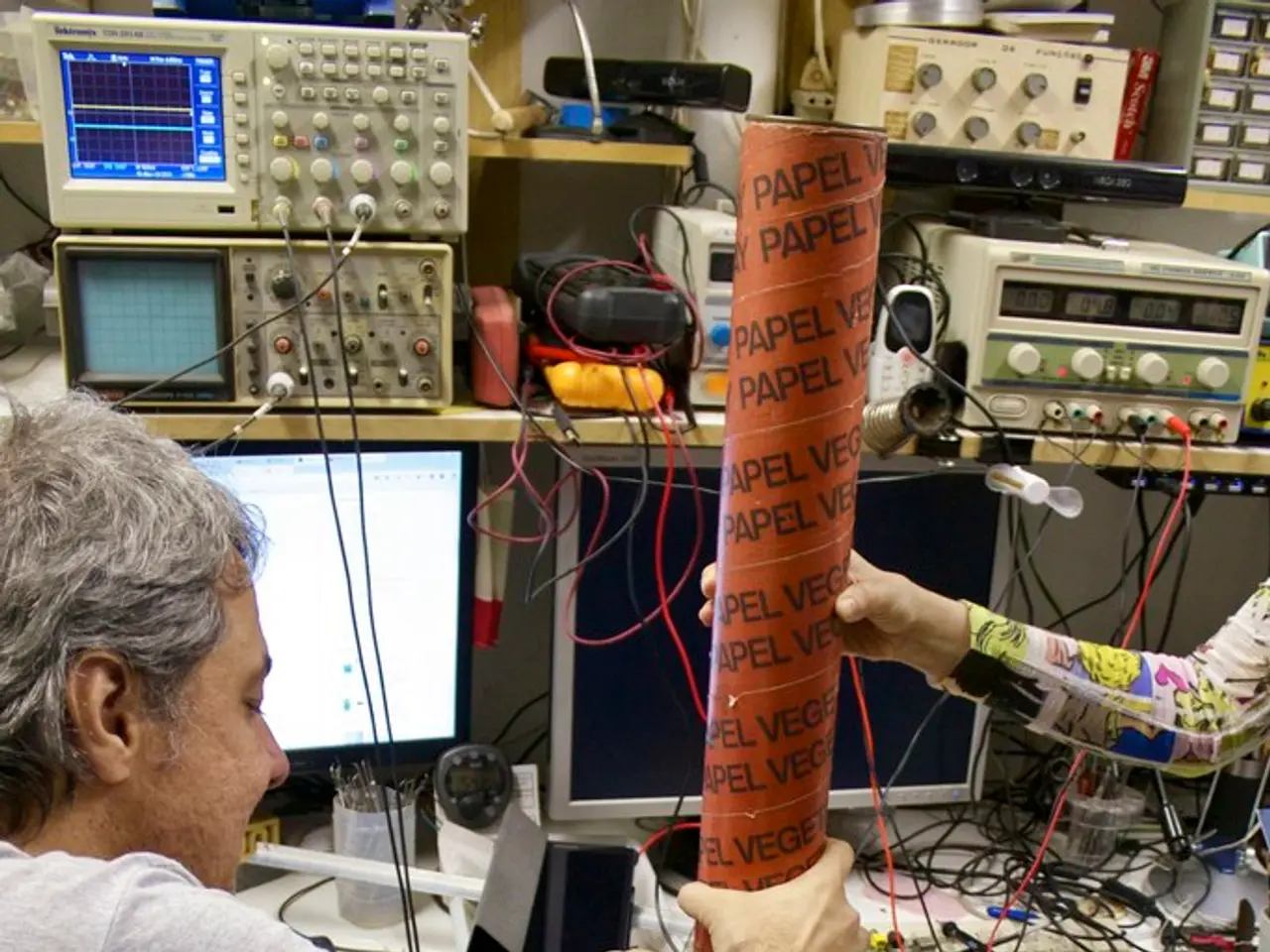Vibrations or tremors occurring within the body: Causes, remedies, and prognosis
In the realm of neurological conditions, internal tremors - shaking sensations felt within the body - can be a common symptom for individuals suffering from Parkinson's disease, multiple sclerosis, or essential tremor. Unlike external tremors, these internal tremors occur without visible movement.
For those with Parkinson's disease, a neurological disorder caused by the loss of dopamine-producing brain cells, treatment options vary depending on the severity of symptoms. Pharmacological treatments, such as levodopa and carbidopa, bromocriptine, pramipexole, ropinirole, and deep brain stimulation (DBS) surgery, are common methods used to manage the disease and its related tremors. DBS involves implanting an electrode in the brain to deliver electrical impulses, typically targeting the subthalamic nucleus or globus pallidus. In cases where medication is ineffective, thalamotomy, a neuroablative procedure, may be considered.
Multiple sclerosis, a chronic condition affecting the central nervous system, can also lead to tremors. While specific treatments for MS tremors are limited, exercises to improve coordination and balance, medications like gabapentin or carbamazepine, and, in severe cases, surgical interventions such as thalamotomy or DBS, are potential management strategies.
Essential tremor, a separate neurological disorder, is characterised by uncontrollable shaking, often affecting the hands, head, and voice. Beta blockers like propranolol and primidone are FDA-approved for treating essential tremor, with other options including gabapentin and topiramate. In some cases, DBS targeting the thalamus can be effective for patients who do not respond to medication. A non-invasive procedure known as Magnetic Resonance-Guided Focused Ultrasound Thalamotomy is also used to treat essential tremor, creating a lesion in the thalamus to reduce tremors.
It is crucial to note that each condition requires a tailored approach, and treatment decisions should be made in consultation with a healthcare professional. For instance, when Parkinson's disease, multiple sclerosis, or essential tremor is responsible for internal tremors, doctors will aim to treat the underlying condition.
Regarding multiple sclerosis, there is currently no cure, but disease-modifying therapies (DMTs) are recommended to reduce the number of flares and slow the progression of the disease. Examples of DMTs include various medications. A doctor may also prescribe steroid injections, specific medications, muscle relaxers, or tranquilizers to manage flares and symptoms.
For internal tremors not associated with a specific condition, treatments can include reducing anxiety, avoiding stimulants, and avoiding intense exercise and heat. Exercise, occupational therapy, physical therapy, and assistive devices can also help manage symptoms of essential tremor.
Current research into the causes of internal tremors is ongoing, with limitations in understanding the root causes. However, for those suffering from these conditions, the availability of various treatment options offers hope for improved quality of life.
- Aq individual suffering from Parkinson's disease, a neurological disorder often treated with levodopa and carbidopa, bromocriptine, pramipexole, ropinirole, or deep brain stimulation (DBS) surgery, may experience internal tremors.
- Within the realm of health-and-wellness, managing multiple sclerosis, a chronic condition causing central nervous system symptoms and potential tremors, can involve exercises to improve coordination, medications like gabapentin or carbamazepine, and, in severe cases, surgical procedures such as thalamotomy or DBS.
- Many medical-conditions, including COPD, diabetes, obesity, depression, and multiple sclerosis, are not directly linked to internal tremors, but might still require tailored treatment approaches in consultation with healthcare professionals.
- As the science of predictive medicine continues to evolve, there may be innovative treatments for neurological disorders and associated internal tremors, providing hope for future generations.
- In cases of essential tremor, a separate neurological disorder characterized by uncontrollable shaking, scientists are exploring the use of Magnetic Resonance-Guided Focused Ultrasound Thalamotomy, a non-invasive procedure that targets the thalamus to reduce tremors, in addition to conventional treatments like beta blockers, gabapentin, and topiramate.
- Healthcare professionals treating individuals with neurological disorders, such as Parkinson's disease, multiple sclerosis, or essential tremor, strive to address the root causes of the symptoms and offer a tailored approach for improved health-and-wellness.
- Current research on the causes of internal tremors, including those associated with multiple sclerosis and essential tremor, continues to advance, shedding light on possible avenues for diagnosis, treatment, and ultimately, a cure.




